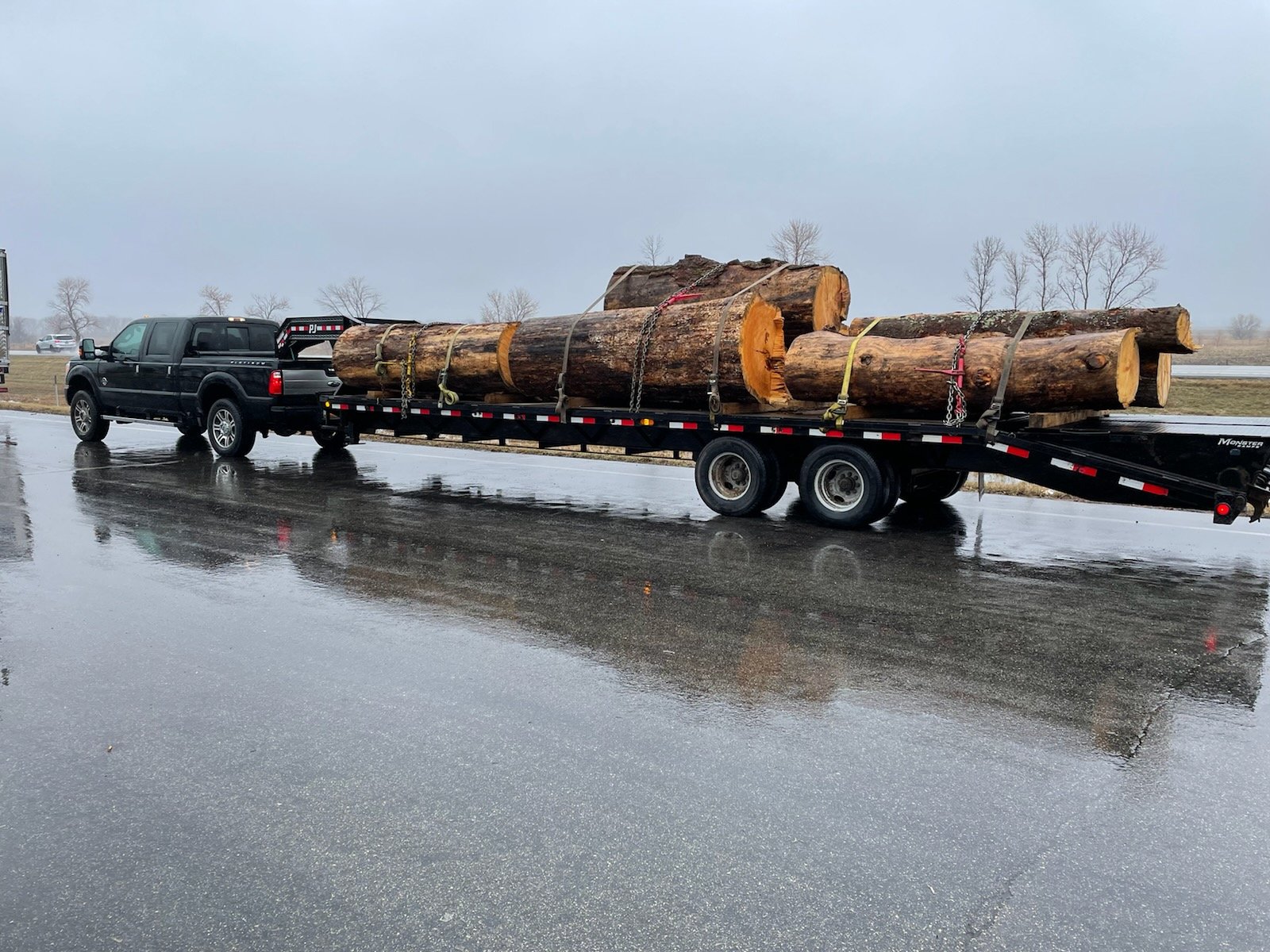Sawmill Life in Photos
-

Measuring Norway Pine AKA Red Pine
This log came from a tree job around Brainerd, MN. In the early 1900s a family bought some property and started a logging outfit. Whey they bought the property, they left several of the existing, mature timber. This Norway Pine dates between 150-200 years old!
-

Transporting Norway Pine
This is what the Norway Pine logs looked like on the trailer as they were being transported from one location to another. The reason the trees needed to be removed was because they had died. The property still contains cabins made from some of these trees.
-

Measuring the Diameter
This is a picture of a log caliper and logger’s tape, which are tools that a sawyer uses to determine the diameter. This Douglas Fir log measures 25 feet. Knowing the diameter helps a sawyer to decide what size of beam/material can be made from the log.
-

Pushing Lumber Into Dry Kiln
This is what it looks like pushing a stack of lumber into the dry kiln. Using a kiln speeds up the process of drying in order to remove moisture content. A kiln enables a sawyer to control the temperature, airflow, and humidity, which helps to produce a higher quality of dried lumber.
-

Using the DitchWitch
This 44’ Douglas Fir log came from Kalispell, Montana. It was milled into beams for a barn in Illinois. The machine holding the log is a Ditch Witch SK1550.
-

Turning Logs Into Beams
Here are more Douglas Fir logs that were milled into beams. These beams are boxed heart, which is the best option for smaller logs.
-

Estimating Incorrectly
The initial estimate for these large logs was around 6k BF. They weighed around 25 ton. The final tally ended up at 8,500 BF of Spruce, Fir and Pine; BF was measured long on the small end; Scribner scale. Unreal!
-

Transporting Douglas Fir
This is roughly 13k BF of Douglas Fir. This load started out as logs in Montana, were milled in North Dakota, and then transported to its final destination in Illinois.